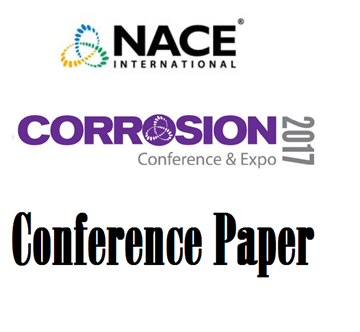Search
Individual Conference Papers
View as
Sort by
Display
per page
Microstructural And Transport Properties Changes In Blended Cement Concrete Resulting From DC Treatments
Product Number:
51323-19124-SG
Publication Date:
2023
$20.00
Microstructural Changes in He Irradiated Zircaloy-4 and Influence On Corrosion Kinetics
Product Number:
ED22-18343-SG
Publication Date:
2022
$20.00
Microstructural characterization and Corrosion-wear properties of Graphene oxide/ Polytetrafluoroethylene Coatings for Geothermal Drilling Applications
Product Number:
51321-16474-SG
Publication Date:
2021
$20.00
Microstructural Engineering of High Manganese Steels for Hydrogen Storage and Delivery
Product Number:
51323-19453-SG
Publication Date:
2023
$20.00
Microstructural Evaluation of Calcareous Deposits on TSA-coated Steel Structures at Elevated Temperatures
Product Number:
51315-5949-SG
ISBN:
5949 2015 CP
Publication Date:
2015
$20.00
Microstructural Study of the Corrosion Effect on AlCrFeNiMn Multicomponent Alloy Tested in Geothermal Environment
Product Number:
51317--8916-SG
ISBN:
8916 2017 CP
Publication Date:
2017
$20.00
Microstructure and Corrosion of Phosphate Containing Cr?O? Gasifier Refractories
Product Number:
51315-5974-SG
ISBN:
5974 2015 CP
Publication Date:
2015
$20.00
Microstructure and corrosion properties of stainless steel synthesized by ball milling method at different times
Product Number:
51323-19442-SG
Publication Date:
2023
$20.00
Microstructure And Mechanical Properties Of Additively Manufactured 316L Stainless Steel.
Product Number:
ED22-18491-SG
Publication Date:
2022
$20.00
Microstructure Characterization Of Additively Manufactured Alloy 718
Product Number:
51323-19419-SG
Publication Date:
2023
$20.00
Microstructure Characterization Of Alloy 600TT Steam Generator Tubing
Product Number:
ED22-17239-SG
Publication Date:
2022
$20.00
Micro-Tensile Testing of Chromium Coated Zirconium Cladding
Product Number:
ED22-17270-SG
Publication Date:
2022
$20.00












